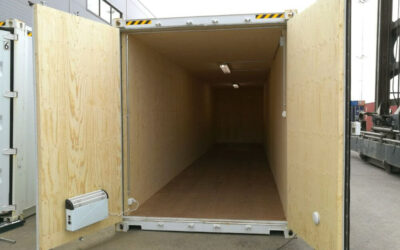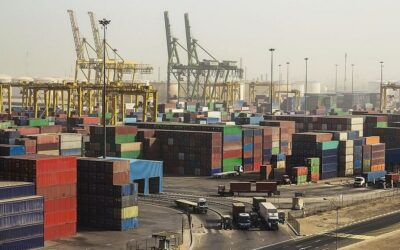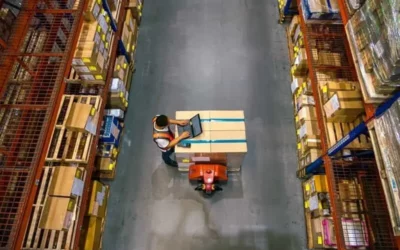How to Adopt Retail Pool Distribution in UAE
In the UAE, there are a variety of businesses- small scale, mid-size scale, and large scale businesses. This reflects each business’s different capacities and needs in terms of distribution. Therefore, it boils down to how they implement their distribution strategies and channels.
Each business class needs to distribute products of varying units and meet the need for frequent shipping. As a result, they are cumbered with the challenges of cost, efficiency, and long travel times. One proven solution is the adoption of retail pool distribution.
This article takes a deep dive into the concept of retail pool distribution UAE. Spanning from what it means to how it works and how it can be implemented for practical results.
Table of Contents
What is Pool Distribution
Pool distribution is a solution or strategy where cargoes/products from multiple sources are shipped together to multiple destinations in the same geographical area. Many take both pool distribution and the less than truckload(LTL) to mean the same thing. However, they are different.
While both strategies employ the concept of consolidation, less than truckload(LTL) requires more vehicle resources compared to pool distribution. This is because the pool distribution compresses the less than truckload(LTL) shipments into a lesser number of trucks. Hence it is safe to say that retail pool distribution is a way of improving on the less than truckload(LTL).
How Does Pool Distribution Work
The concept of pool distribution is quite easy to understand. LTL shipments which could be independent(from a single business) or multiple(from different businesses), are combined or consolidated into one Full trailer or Full truckload FTL. Then the trailer moves the goods to the different individual delivery locations(pool points) within the same geographic region.
Let’s make this practical.
Six businesses want to ship products to their customers in different towns in Dubai. Pool distribution can work since its customers are located within the same geographic region. The six businesses combine their shipment and put them in one truck. All the delivery point for each business is planned along the route, and the truck makes the necessary stops at each location.
This will save time and resources compared to a situation where each business uses a separate truck.
In summary, the flow of pool distribution goes thus;
- Consolidation of shipments into one truck(space of the truck is maximized)
- Truck moves shipment to the pool point/distribution center
- Organization of products based on delivery points/location
- Local delivery trucks take goods/products to the final destination
When Would You Use Pool Distribution?
The frequency of orders and size of shipments are two focal factors that suggest the need for a business to employ pool distribution. Pool distribution is a good idea when a business has a high frequency of consistent less than truckload(LTL) shipments and you have a fixed delivery point. In such a case, pooling will help businesses reduce journey legs and cut costs.
Another angle that suggests a business could use pool distribution is the high volume of retail customers in a specific region. The region specification is one major driver of the pool distribution strategy. Businesses can opt to put all shipments in a single truck and ply the different delivery points in the specified region.
What is Less Than Truckload Shipping?
The keyword in LTL shipping is “small quantities/units of shipments.”It is the shipping service of small units of goods that do not need the full space of a truck. It employs the consolidation strategy where different businesses can share the same space in a single truck. Each business will just need to pay for the space their goods occupy. Technically, LTL is considered for cargoes less than 15,000 pounds.
The less than truckload (LTL) is a proven solution for businesses that have high demands and frequently need to ship small batches of goods. This is dominant in the ever-rising ecommerce industry. The goal of LTL is to improve efficiency and save the cost of shipment for businesses.
Pool Distribution Vs. Pool Consolidation
Several misconceptions come into play between these two concepts. The first thing to understand is that they are part of the entire picture; however, pool consolidation comes before pool distribution. It can be seen as the first stage of the entire process.
Pool consolidation is the stage where multiple businesses combine their LTL shipments into a single truck. On the other hand, pool distribution kick starts at the point where shipments are separated to be sent to their respective final delivery locations.
There are cases where the distribution isn’t well pronounced. Such a case involves businesses moving LTL shipments to the same retailer or exact location. Hence there is no need for the distribution phase.
The Benefits of Pool Distribution
It’s proven and evident that pool distribution contributes immense benefits to businesses around the globe and in the UAE. Here is the rundown
Saves Cost
This is the first lookout when it comes to the effects of pool distribution. From the line of LTL down to an efficient pool distribution strategy, businesses will cut down costs. The regular shipping models will require multiple journey schedules; however, this is eliminated by pool distribution. Reduced journey legs will reduce vehicle resources and reduce costs in the same vein.
Shorter Delivery Time
Pool distribution boosts the delivery efficiency. It makes fewer stops and ensures all shipments undergo one simple journey getting to the destination at the same time.
Streamlined Distribution Process
Pool distribution reduces the complexities in the distribution chain. It makes the chain simple by creating shorter and more viable options than the traditional methods.
Seamless Tracking and Improved Visibility
Knowing the locations and stages of inventory movement is crucial in the supply chain. Tracking and visibility become cumbersome for complex distribution patterns. However, pool distribution consolidates the process and easily gives a clear picture of the entire process. Hence it is easy to track.
Reduced Traffic and Carbon Footprint
Despite the need to fulfill customer desires, there is also a measure of positive contribution businesses should give to the environment. This is in terms of traffic and carbon generation from the numerous logistics vehicles on the road.
Pool distribution reduces the number of transit vehicles and, in turn, will reduce traffic and carbon spreads from vehicle exhaust.
Why Pool Distribution Might not be Right for Your Business?
Although pool distribution proves to be a fantastic strategy, some situations limit its efficiency. In fact, it is not suitable for every business. Here are some reasons.
Type of Products
The type of products a company produces depicts its suitability for pool distribution. Since pool distribution anchors on consolidation, it will be difficult for businesses that produce fragile products. Fragile products will require special placing and handling and as a result, isn’t suitable for pooling.
Company Policies/Mode of Operation
How companies operate could mar the possibility of pool distribution. This involves companies not willing to change grounds on transportation and distribution. Instead, opting for shipping full truckloads.
This can also include the unwillingness to work with 3PLs who have proven pool networks across several regions.
Alsharqi- Your 3PL Partner for Pool Distribution
Pool distribution entails several technicalities and resources which businesses may not have at their disposal. At this point, it’s best to partner with an industry-leading 3PL partner like Alsharqi.
Alsharqi has got all it takes: retail pool distribution UAE or retail pool distribution Dubai. With a vast and optimized pool network across the United Arab Emirates, businesses can leverage a partnership with Alsharqi to cut costs, reduce transit time, and improve the overall efficiency of their supply chain using the pool distribution strategy.





